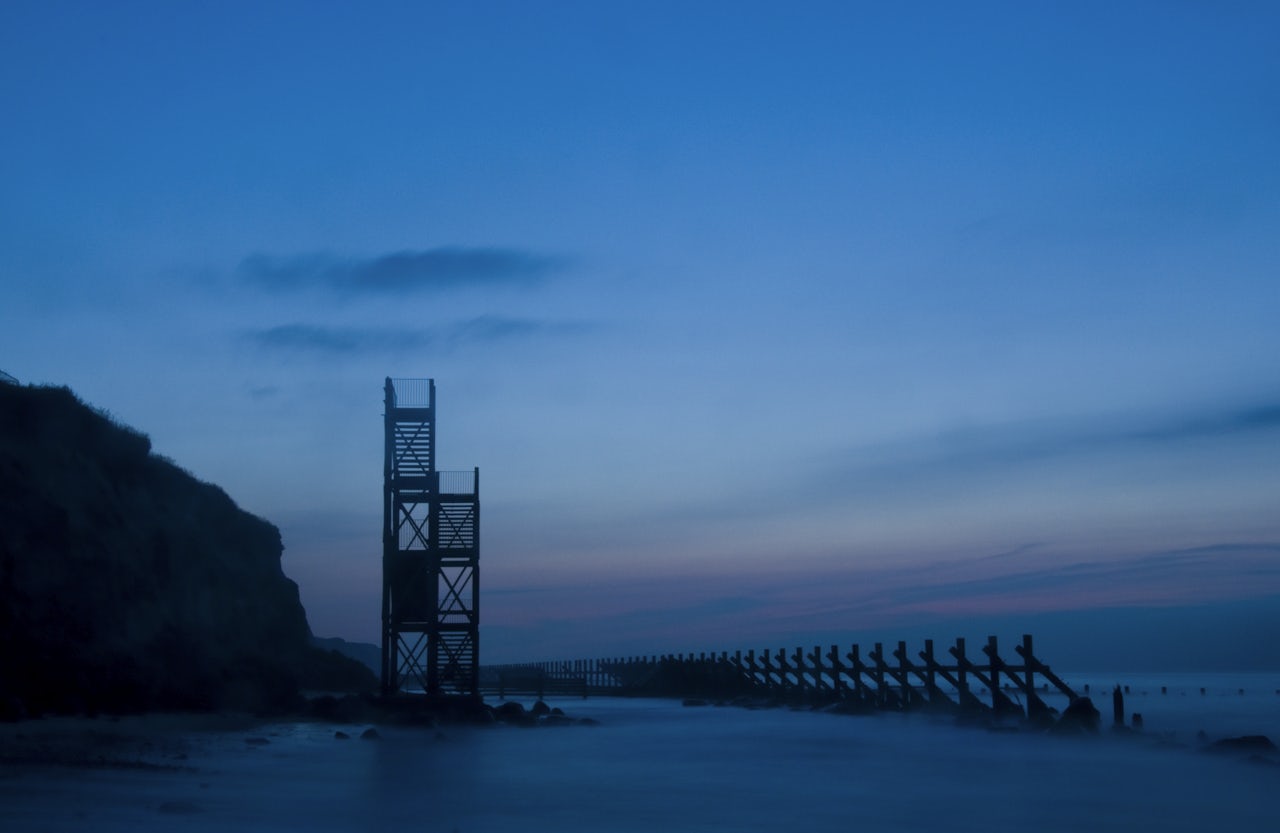The village of Happisburgh, on the east coast of the UK, is falling into the sea. Year-on-year the waves take meters more of the crumbly Norfolk cliffs; residents of the village have been watching this happen for decades. Those that grew up in the surrounding area are used to watching the changing of the landscape.
But now the sea is washing away people’s homes, roads, and will eventually take the village pub, the local church built in the 15th century, and the lighthouse if it continues at the current rate. The church, once a mile from the beach, is now a 150-yard walk from the edge.
The Norfolk cliffs have been eroding for the last 5,000 years, so the coastline has always had an ephemeral feel. Happisburgh is situated in a soft enclave between Walcott and Cart Gap, two other clifftop communities that have felt the benefit of funding from the government for concrete sea walls. But rising sea levels are accelerating erosion at Happisburgh, and future sea level rise and storm frequency due to climate change are likely to have profound impacts on the town.
The summer of 2018 was the last on the cliff edge for Happisburgh’s static caravan site, which has now been forced to move inland. A particularly bad winter of storms saw the metal and aluminium holiday homes there inch further and further to the edge of the cliff; rows of dwellings have periodically fallen into the sea for years. These caravans have now been moved next to the village school. Another caravan nearby had been standing for 13 years, but in December 2013, after a huge tidal surge, the foundations were ripped from beneath it and it suddenly slipped down the cliff.
A lack of national dialogue about the fate of a village of around 1,400 people is hardly surprising, but Happisburgh is nothing if not an index, one of many places globally that will be ravaged quickly and relentlessly by the extreme weather brought on by climate change. There has been a 7-inch sea-level rise since the beginning of the 20th century and, according to the Intergovernmental Panel on Climate Change and research by NASA, by 2100 it could increase by up to 3 feet, 2 inches.
Coastal jeopardy has had a deep effect on local people. “The community as a whole is under threat. We stand to lose a lot,” said Stephen Burke, a charity director.
“There is no real sign of any significant defenses planned. Clearly the government doesn’t think the benefits stack up. People are very much behind the village — coastal erosion has become the common enemy, in a way.”
Perhaps the most striking example of the effect of coastal erosion is the damage done to the homes on Beach Road, the residents of which are being evicted by the sea. Attempts made at the beginning of the year to fortify the end of a pathway to the beach have, to a degree, delayed the damage, but not before several houses were washed away.
In 2008, a couple tried to put up their bungalow on the road as collateral for a loan. While other houses in the area were valued at around £80,000 ($102,100), theirs was valued at just £1 due to the rapidly changing coastline. The house has now been bulldozed, along with the other properties on that road, which were taken by a 2013 tidal surge.
“We haven’t pledged enough resources,” said parish councillor Denise Burke.
“I am conscious that in some ways, in terms of putting permanent defenses in at Happisburgh, we have missed the boat. There needs to be a much bigger conversation around why we never invested in proper defenses.”
From 1992 to 2004, Happisburgh lost approximately 100 meters of cliff, which has ultimately led to creative solutions for ways to get onto the beach. In the early 2000s, there were large chrome steps that met the cliff and led down to the sea (pictured below). For a year or so, these hung in the middle of the beach while the cliffs receded.
Norfolk County Council moved them in 2012. In the following years paths were carved out by people at the caravan site to clamber down the sheer cliff edge further along, with footholds and temporary handholds to navigate the 10-meter climb. Since 2016, a number of safer dirt ramps have been bulldozed in to give access. The sea can destroy these within months, too, with its ruthless and relentless tidal swells.
The neighboring coastal towns have received support from the government through the building of concrete sea walls. In October, the UK government’s Committee on Climate Change released a report that calculated the cost of implementing the current plans to protect the coast nationally would be £18 to 30 billion ($23 to 38 billion), depending on the rate of climate change.
The same report stated: “This problem is not being confronted with the required urgency or openness. It is almost certain that England will have to adapt to at least 1 meter of sea level rise at some point in the future.” England has always been an island nation, now with a coastline home to more than 15 million people. But it is already too late to reverse the damage done and get back the houses that have been lost.




